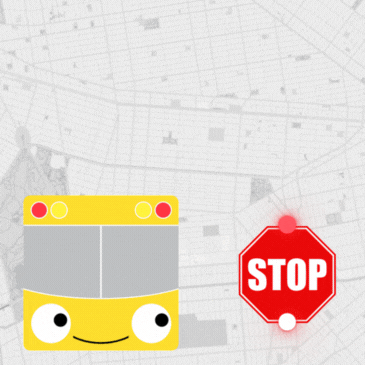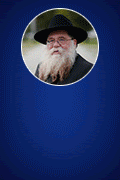
Chabad: Rattling the Cage
Evidently, it was anti-disengagement saboteurs from the messianic wing of Chabad who scattered nails and oil on the highway into Jerusalem last week, says Internal Security Minister Gideon Ezra.
On the same day the highway was boobytrapped, some young Israeli rabble who’d taken over a Palestinian house in Gaza stoned a Palestinian teenager under an IDF soldier’s care. The house, which was spraypainted with Kahanist slogans and the warning “Sharon, we’ll murder you, too,” had messianic Chabad flags flying from the roof and Chabad posters pasted to the walls.
These are just the most recent examples of the ultra-nationalist lethality coming out of Chabad, which for decades has been, without question, the most dynamic, high-profile Jewish movement in the world.
A decade ago, it was a pair of Chabad yeshiva students from Gilo who printed up the infamous photomontage of Rabin as an SS officer, according to police who arrested them a few weeks after the assassination. (Shin Bet informer Avishai Raviv’s only involvement in the episode was to point out the posters to a TV reporter at the rally.) Rabbi Yitzhak Ginsburg, who was indicted for racist incitement in a book he authored praising Baruch Goldstein’s massacre, is a veteran Chabadnik.
Overseas, people think the Chabad movement does nothing but mitzvot. All they hear about is Chabadniks bringing Yiddishkeit to the Jewish masses, handing out kiddush cups by the thousands and holding Pessah Seders for homesick Israeli travelers in Thailand.
And this is true, in part: Abroad, the dominant personality traits of the movement really are mitzvot and outreach.
But not in Israel.
In Israel, for all the tefillin that Chabadniks lay on Israeli guys’ arms, for all the shmura matza they bake for Pessah, the most significant, influential thing the movement does is spread political poison.
I know this is not all of Chabad, that there is a messianic wing associated with radicalism and violence, and then there’s the mainstream wing that disassociates itself from that sort of thing.
But while I know that not all Chabadniks are admirers of Baruch Goldstein and Yigal Amir, I don’t think the line between dangerous, messianic Chabad and harmless, mainstream Chabad is as hard and unbreachable as spokesmen for the mainstream like to claim.
The main political difference between the two camps is not over ideology but over tactics; my hunch is that on the ground, there’s a lot of overlap. And until mainstream Chabad actively and publicly ostracizes the messianic wing, until it goes after them like an enemy no less despised than, say, Ariel Sharon, I’m afraid that good Chabad cannot wash its hands of bad Chabad.
They may be rival camps, but they still belong to the same movement. In the end, Chabad is Chabad.
Further, on the issue of overlap, there is a considerable degree of it between Chabad and the Kahanist movements (the latter being officially outlawed in Israel and the US, but still, of course, flourishing in both countries). The two Chabad yeshiva students who printed up the Rabin-SS photomontage were also members of Kahane Chai, according to then Jerusalem police chief Aryeh Amit.
And at a February rally in Jerusalem of Chabad rabbis, where Sharon was accused of collaborating with the Palestinians to bring on another Holocaust, Kachniks and fellow-travelers were more than welcome.
“On one side of the stage, [Kahanist leaders Itamar] Ben-Gvir and [Baruch] Marzel mingled with Chabad luminaries; on the other, Dov Lior, chairman of the Committee of Rabbis in Judea, Samaria and Gaza and known for his political extremism, was accorded a place of honor,” wrote The Jerusalem Report. (Lior, of Kiryat Arba, gave a eulogy at Baruch Goldstein’s funeral, saying the mass murderer “took action for no other reason than to sanctify the holy name of God.”)
Acts of criminal insanity by Chabadniks in Israel haven’t been limited to the issue of Greater Israel, either. In March 1997, a mob of more than 200 Chabadniks in Lod sacked a Jehovah’s Witnesses church, torched it, made a bonfire of its Bibles and danced around the flames singing their anthem “Long live our master… King Messiah for eternity,” according to Jerusalem Post accounts.
And while Chabad in the Diaspora isn’t known for the bloody-mindedness that characterizes much of the movement in Israel, neither is it completely free of the odd, dark impulse. A friend of mine who used to pray regularly at a Chabad synagogue in Florida told me that in the days after Rabin’s assassination some congregants openly voiced their approval, expressing the regret only that Shimon Peres had survived.
I know that Chabad does a lot of good in the world, that it’s brought a lot of Jewish soul to people who are much better for it. I have a relative, an ex-Israeli who came to Los Angeles as a poor college student in the early Sixties, who says he was first drawn to Chabad because it had the only synagogues in town where he could get a free seat for the High Holy Days. A complete opponent of settlements, he’s still with Chabad, gives them tons of money, and says his rabbi never takes sides in Israeli political controversies.
Myself, I hired a highly-recommended Israeli Chabad mohel to circumcise my youngest son. He was a jolly guy and did a fine job.
But while Chabad definitely has its good side, for the duration of this Israeli summer, at least, it would be a good idea to focus on the bad side. Masses of Chabadniks are making plans to try to stop the disengagement – and not just by laying tefillin.













